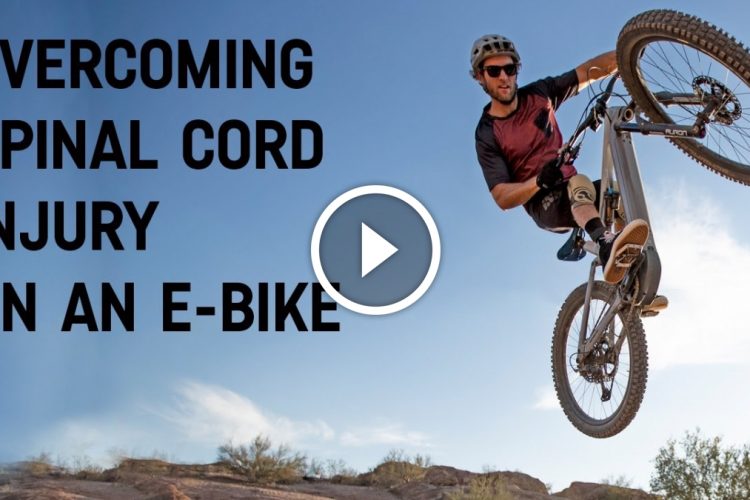
A study conducted by the University of British Columbia (UBC) has revealed that 58 mountain bikers in the province suffered spinal cord injuries between 2008 and 2022, according to an analysis of data gleaned from the Rick Hansen Spinal Cord Injury Registry. While these injuries didn’t result in death, “these are devastating injuries,” said study senior author Dr. Brian Kwon, a professor of orthopedics and Canada Research Chair in Spinal Cord Injury at UBC. “There’s nothing quite as excruciating as having to tell a patient that they may never walk again.”
Of the 58 spinal cord injuries, 27 (46.5%) “were motor complete spinal cord injuries,” according to an article from the UBC. “This includes 14 people who experienced tetraplegia/quadriplegia (affecting arms and legs) and 13 people who experienced paraplegia (affecting legs).”
The riders who suffered spinal cord injuries were 93% healthy young males, with an average age of 35.5 years old. 77.5% of the injuries were the result of an endo, i.e. being “propelled over their handlebars.” 86.3% of those injured were solely wearing helmets, with an additional 9.1% wearing helmets and other body armor. “Only 4.5 percent wore no protective equipment at all,” according to the article.
“36 percent of spinal cord injuries recorded in the study occurred at Whistler Mountain Bike Park.”
Even though the study pulled data from a registry covering the entirety of British Columbia, a shocking 36% of these spinal cord injuries were incurred at Whistler Bike Park.
A “staggering” number of injuries compared to other sports.
Kwon notes that this number of spinal cord injuries is “staggering” compared to high-impact sports that are traditionally studied, such as hockey and American football. Over the same period of time, “researchers found just three such injuries among hockey players” in Canada, according to an article on GlobalNews.ca. The number of spinal cord injuries among mountain bikers is also seven times higher than it is among skiers and snowboarders.
Kwon also compared the injury rate to American football, saying in an interview: “In a population of 330 million people, [the USA] sees seven spinal cord injuries [per year] from one of the most violent collision sports out there. And in our population of 5.3 million in BC, we see four to five. In one year, we saw 12.”
The injury rate of mountain bikers is so high, and the results are so catastrophic, that the title of the study calls this “A Cause for National Alarm.”

The cost of spinal cord injuries
In addition to the physical, mental, and emotional toll of such injuries, there are very real monetary costs associated, too. Of the 27 individuals who “suffered motor complete SCI (14 tetraple-gia, 13 paraplegia) with estimated average lifetime costs in Canadian Dollars of $4.8M and $4.5M each, respectively,” according to the study.
The study goes on to estimate that these 58 injuries (it appears not to factor future injuries into this number) will cost British Columbia $195.4 million CAD over the individuals’ lifetimes. This includes “lifetime health care and rehabilitation costs, patient expenses, and other economic costs such as loss of productivity.”
How do we reduce this “staggering” number of spinal cord injuries?
“There are a lot of factors to consider including how we assess and communicate risk, the importance of rider education, the role that personal safety equipment can play, and how we can safely design trails and resorts,” said Kwon.
Kwon said in an interview that he doesn’t “view it like an adversarial thing with the mountain bike parks. I think that they need to understand that this is happening, and hopefully that they’ll want to work with us, because I think that’s really the best way forward.”
“We all have a shared interest in preventing these catastrophic injuries from occurring,” he concludes.





















19 Comments
Nov 28, 2024
Like a lot of contemporary pathologies I do feel it is largely social media's fault, every sport has now been taken to a lethal level of extreme displays to be posted on YouTube.
Nov 29, 2024
Nov 27, 2024
Nov 27, 2024
Nov 28, 2024
But the biggest (anecdotal) contributor to the reduction of injury that we have seen in the local gravity riding population, particularly in young riders, is coaching.
So many more kids are seeking good quality coaching, which is leading to higher quality riding. While this can lead to higher risk taking, the results (according to local race directors) appear to be in favour of better outcomes.
Nov 28, 2024
Nov 28, 2024
Nov 28, 2024
Nov 30, 2024
But nonetheless, in both cases, one major point: just don't do stupid stuff! I would assert that in most bike crashes, the rider had a 'I probly shouldn't do this' moment. Well if your brain is telling you that, it's best to not do it.
Also, the fun:risk ratio has to be always considered. It's of course a subjective judgement however there are cases where something more dangerous ISN'T even any more fun - so why even do it. (As an aside my own mindset has changed over the years where more risky is almost always LESS fun - because of the risk in fact. Especially afterward because the 'what if' weighs on you. But that comes with age, I would say.)
Nov 28, 2024
Nov 28, 2024
Nov 30, 2024
Nov 27, 2024
50 years of it has left a mark...
Nov 30, 2024
Here I am, 50, 30+ years from being paralyzed in the military, playing this game
I'm not hitting insane lines at Whistler, but I certainly enjoy the occasional bike park on the east coast.
I meet more people paralyzed from ATV accidents in my year long hospital rehab than anything else - not a single bike related accident.
Hell I knew a guy rolled off his couch drunk, broke his neck
Life is risky
Throwing ourselves off mountain sides a bit more
If you're gonna play the game, know the possible outcomes I suppose
Nov 27, 2024
And someone else.
It's never my fault. /s
Nov 28, 2024
Nov 28, 2024
Dec 3, 2024
Nov 28, 2024